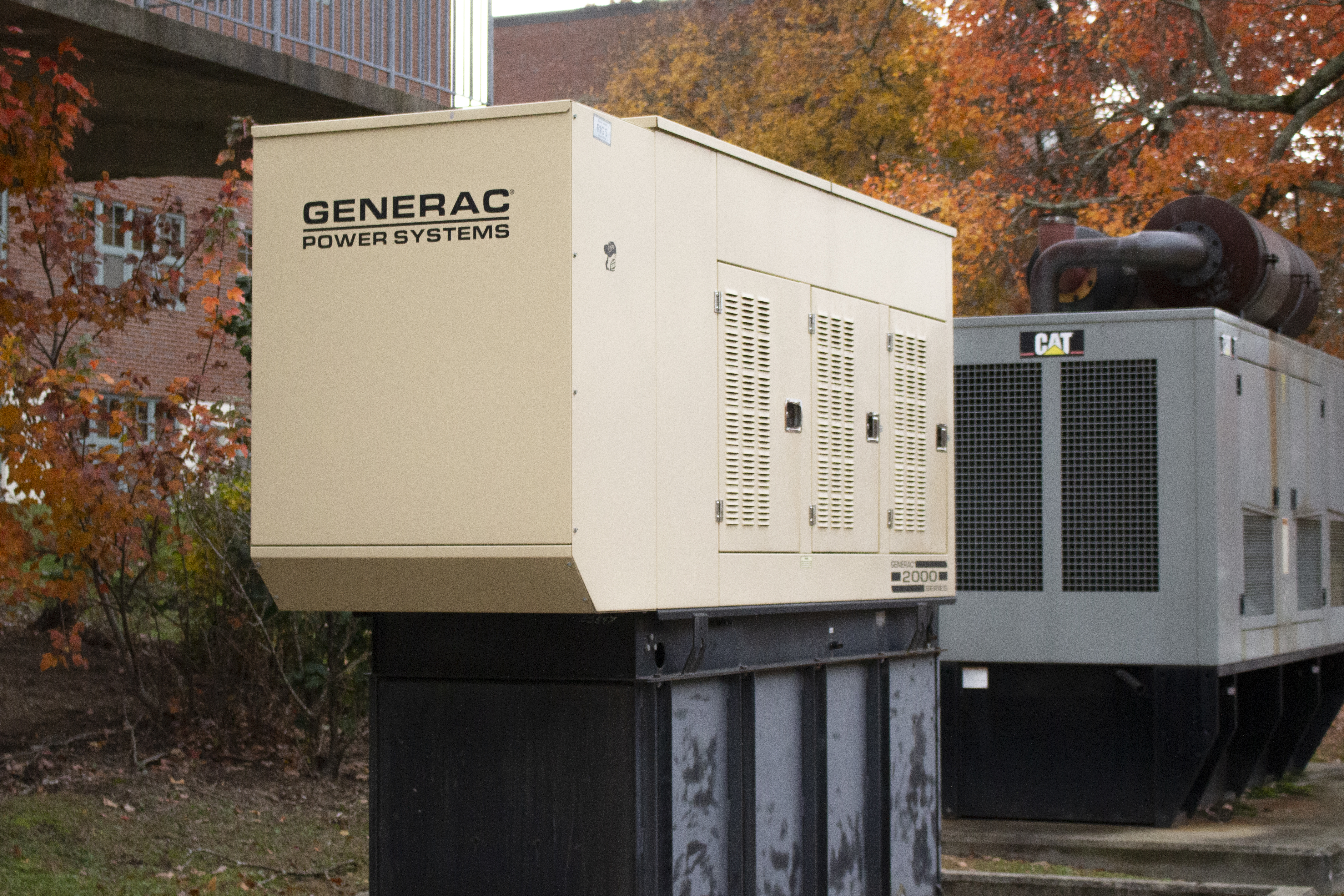When a storm caused a power outage on Oct. 17 it put the entire campus without electricity, heat or hot water, and some began to question why the University of Rhode Island did not have emergency backup generators ready.
The Memorial Union, Hope Commons, Butterfield Dining Hall and Health Services all had generator power because they are considered essential buildings. This requires them to have available generator power in case of emergencies, such as this power outage.
However, m
The University began the first phase of updating its generator system just a few months ago, according to Assistant Director of Capital Projects Kenneth Burke.
The dorms in the Roger Williams Complex surrounding the Fascitelli gym went through an update in their electrical gear and wiring systems in the first phase of the generator update this past summer. It was essential to complete this first phase because the buildings are aging and the wiring was becoming outdated. The equipment was brought up to current code in all eight of the buildings in the complex.
“There is a desire of the University to have shelter-in-place emergency generation power, so that in the event of a power outage, all functions of the building will stay powered up,” Burke said.
Capital Projects has been looking into these power forms for quite some time, but the trouble was figuring where to put the massive generators on campus, as they were deemed unable to fit within the complex area. Their size is comparable to a train car.
According to Burke, there is a second phase of the project that includes getting these generators installed on campus for the complex. They are now looking to be installed on the corner where Butterfield Road meets West Alumni Avenue. Burke expects this to be completed by the summer of 2021.
There is also a future plan for Heathman, Peck, Merrow, Tucker and Hutchinson Halls to obtain shelter-in-place generators. The date for this installation is unclear. The University’s goal is to get these generators for every building, but it is also unclear when many of the first-year dorms will be added into the plan. The new Brookside Apartments have already installed shelter-in-place generators.
The idea of shelter-in-place power supplies started to be discussed after there was a University-wide power outage during Winter Storm Nemo in 2013.
“We commissioned an electrical engineering study to look at generation power for buildings on campus,” Burke said. “One of the priorities is the residence halls, emergency operations, facilities, police and the project has evolved since then. We’ve been actively working on it.”
Assistant Director of Public Safety and Emergency Management Samuel Adams had a large role in communicating resources and managing the situation for the University during the power outage.
One of Adams’ main concerns during the power outage was managing the fire alarm systems, which are battery-run. According to Adam’s, the batteries have a lifetime of up to 60 hours per building code. However, they need to be checked sooner than the 60-hour benchmark to ensure they are still working.
“At 18 hours, we are extremely conservative about it, so we start paying attention to the [fire alarm battery],” Adams said. “At 24 hours we really want someone there who’s watching it, because if it powers down we don’t have any way of knowing it.”
Adams is unsure as to when every building will be connected to an emergency backup generator.
“The long-term goal is to have all residence halls on generator battery,” Adams said. “How long is it going to take us to get there I’m unsure. We’re working with what we’ve got. We have all these projects in a sequence, and as the money comes available, we’ll just come working through the sequence.”
The University and all the stakeholders involved in the power outage re-examine the situation after it is over in order to see how they handled it. These stakeholders include all University officials that played a role in communicating or managing the day-long power outage.
“Everytime we have an incident we try to take a good look at what worked and what didn’t work,” Adams said. “This is not our first power outage. We’ve been through a number of these. They do tend to be challenging, particularly for the dorms that don’t have back-up power.”





